What to do in October
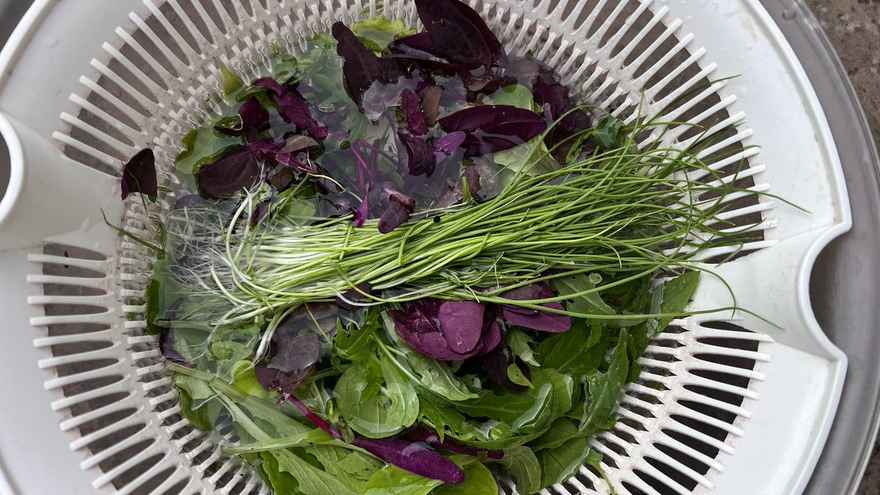
October is a time of change in the container garden. Until the first frosts come, you can pick the last of the warm weather loving crops - the tomatoes, chillies, runner beans. If you sowed winter crops like kale and rocket in the summer, these will now be establishing. If not, there is still time to sow fast growing hardy crops like fava and pea shoots to keep you in greens in the coming months. Jobs for this month include
- Harvest tomatoes, chillies, squash runner beans before first frost.
- Consider protecting winter crops - see discussion below.
- Slug and snail patrols.
- Cover empty pots or sow with seeds
- Sow fast growing salad crops.
- Save seeds.
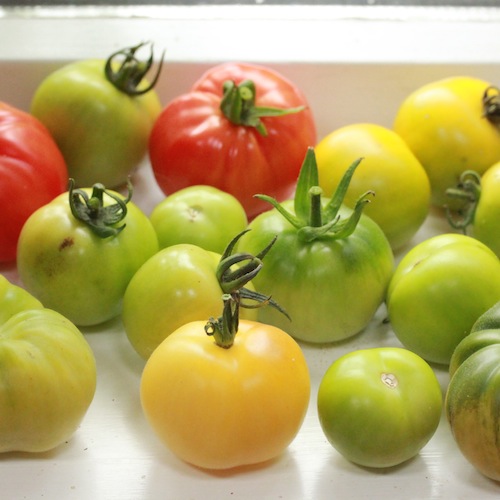
Green tomatoes will often ripen if left on a window sill for a few days / weeks.
1. Harvest your tender summer crops
Harvest your last tender crops: courgettes / zucchini, squash, tomatoes, aubergines, French and runner beans and chillies before the first frost.In warmer cities like London, you may be able to pick tomatoes right into November, even early December To find the expected first frost dates for you area Google "first frost dates". In these times of increasingly unpredictable, you also need to keep a close eye on the weather forecast.
What to do with your chillies
Chillies are perennials which means they will live and fruit for several years. You can bring them inside to survive the winter (they'll keep fruiting for a while), and then put them outside again in early summer next year. If you don't have space inside, harvest the chillies and hang them to dry. Or cut them up and freeze. Frozen and dried chillies taste quite different. Frozen taste more like fresh chillies, while dried ones usually develop a warmer, fruitier taste. Thin skinned chillies are the easiest to dry. Thicker skinned varieties, like jalepeno, are often best to freeze or pickle. It's interesting to experiment.
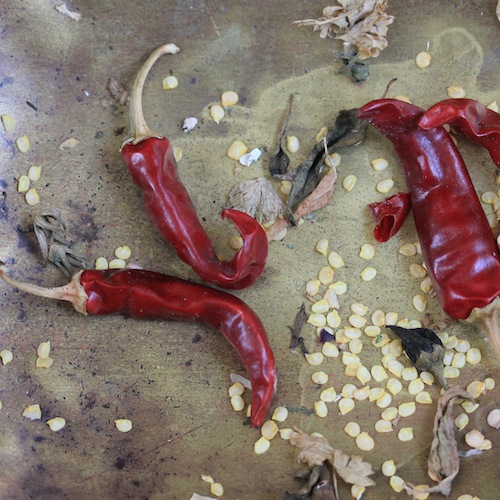
Dry (or freeze) your chillies to give you a supply through winter.
2. Is it worth protecting winter crops?
If you sowed some winter crops (kale, rocket etc) in summer, they should be getting well established now. Providing protection for your crops with cloches (like plastic sheet on hoops) or fleece in cold spells has pros and cons. Most crops will grow faster and bigger if you can give them some protection from the cold and the wind. How much difference protection will make depends on the crop (cavelo nero can survive very cold weather), how cold the winter is, and how exposed your growing space is. On the other hand, rigging up cloches over individual containers is time consuming and a bit faff. Plastic cloches can also look quite unattractive and be prone to blowing over. In many places protection is not essential. I've successfully grown nearly all my winter crops without protection in both London and Newcastle. That said, crops I have covered have usually done better. So it is a bit of balance and personal choice. I'm happy growing mine without protection but I could get bigger harvests with protection. As usual, trial and error is usually the best way to find what works for you in your space.
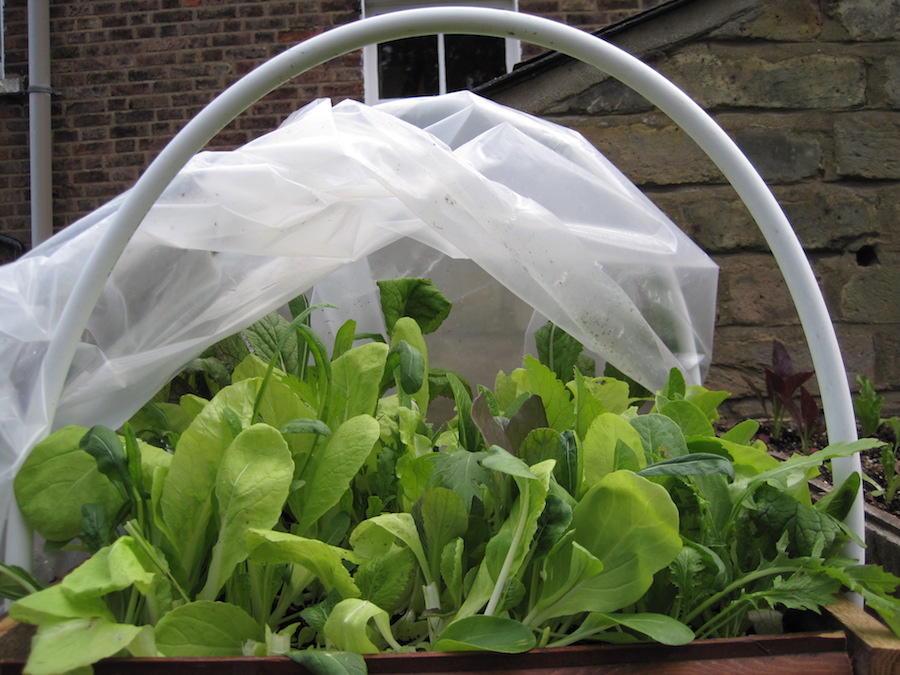
Cloches can be made with hoops and plastic. Crops grow better protected from the wind and cold. But there is a certain amount of work involved and aesthetically they don't look the best.
3. Protect Herbs
Some herbs will survive the winter better than others. The hardier herbs (more resistant to frost) include chives, mint, thyme and sage. They'll die back, but appear again magically in the spring. Parsley, rosemary and coriander are also fairly hardy, and will usually survive in leaf throughout the winter (like other winter crops they'll grow more productively if covered with some form of cloche). Herbs that are a less resistant to the cold include lemon verbena and tarragon. These may survive the winter unprotected (my lemon verbena has survived the last five winters), but covering them with horticultural fleece will improve their prospects, particularly if your growing space is exposed to cold winds.
The tender herbs (killed by frost) include basil, Vietnamese coriander and scented pelargoniums. You can bring the whole plant inside to keep on the windowsill. If the plant is too large to fit on your windowsill, you can take a cutting and raise it inside over autumn and winter. Cuttings raised at this time may grow a bit spindly (due to lack of light) but they do the job. I do this with Vietnamese coriander each year.
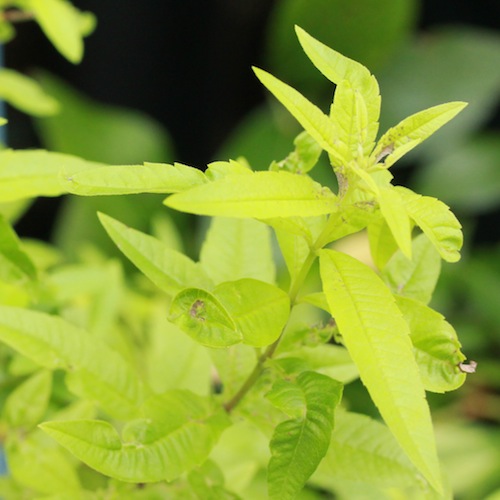
Lemon verbena is tender and the leaves will die back over winter. Mine has survived outside in a pot most years but it can be killed in very cold winters. So it's worth protecting if cold weather is forecast.
4. Slug and snail patrol
Slugs and snails may catch you by surprise at this time... they can't make much of a dent into a large tomato plants - but your freshly planted, leafy winter crops... Decimated in days! Do some evening slug patrols to keep on top of them. I got lazy and look what happened:-
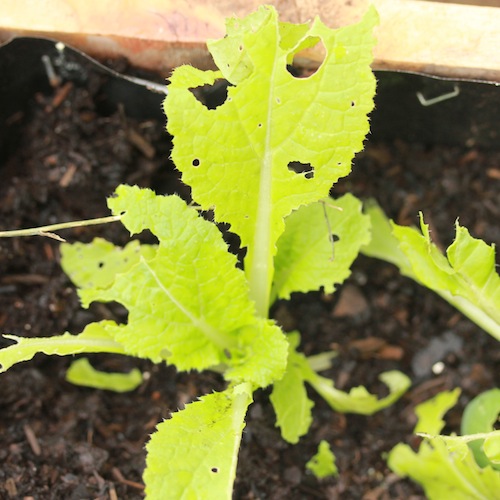
Chinese cabbage munched by snails.
5. Managing pots over winter
When you pull out your tomatoes and other finished crops, it can be beneficial not to leave the pot bare and empty. Rain will wash nutrients out and the compost may dry out if there are prolonged dry spells over winter. (Dried out compost is hard to rewet and loses vigour.) Instead, move some salad seedlings into the pot, or sow some fast growing pea shoots or a fast growing green manure (eg mustard) or cover the pot with a layer of plastic to keep moisture in and protect it from rain (eg an old compost bag).
6. Sow fast growing winter crops
Its too late for sowing most winter crops, but you can still get a crop from fast growing, (and hardy) pea shoots or broad bean or fava shoots. And if you can rig up a cloche or mini greenhouse, you might also be able to squeeze in a sowing of a hardy salad like rocket and mizuna early this month.
7. Save seeds
Keep saving seeds! Tomatoes are one of the easiest and you watch a video on how to do this in my September tips.

Home saved tomato seeds - from my favourite cherry bush tomato.
Your turn...
What is happening in your container garden this month? Are you planning to grow over winter or have a break from growing until the spring? I'd love to hear from you in the comments below.

32 comments
Leave a comment